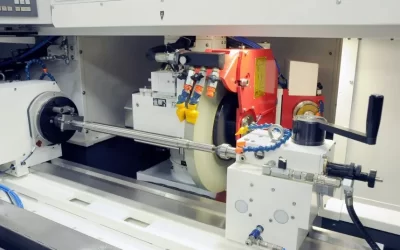When working with metal, precision is required. Whether you’re working on a manufacturing, metalworking, or DIY project, the quality of your tools has a big impact on the end outcome. Among this equipment, a deburring tool is essential for obtaining a clean and professional appearance.
Understanding Metal Hole Deburring Tools
A hole deburring tool is designed to eliminate sharp edges and burrs that can emerge from cutting or drilling metal. These burrs may compromise the functionality and appearance of metal parts, potentially causing issues during assembly or operation. By ensuring that the metal edges are smooth, the tool reduces the risk of injury and enhances the overall quality of the work. Deburring tools come in various forms, each suited for different applications. Manual tools are ideal for smaller projects and precise tasks, while powered deburring equipment is more efficient for larger projects or continuous use. Each type offers unique advantages, and selecting the right one depends on the specific needs of the job.
Advantages of Using a Metal Hole Deburring Tool
Using a metal hole deburring tool has a variety of benefits beyond simply removing sharp edges. First and foremost, it aids in reaching a higher level of accuracy in your work. Smooth edges are not only more visually appealing but also functionally significant, especially in components that fit together or where safety is a concern. A well-deburred hole decreases the risk of metal fatigue and failure. Sharp edges can cause stress concentrations, resulting in cracks and other problems over time. By properly deburring all edges, you can extend the life and integrity of your metal parts.
Choosing the Proper Metal Hole Deburring Tool
Choosing the appropriate deburring tool necessitates careful consideration of various criteria. The type of metal you’re working with, the size of the holes, and the amount of work are all valuable factors in picking the best tool for your needs. A handheld deburring tool, for example, may suffice if you’re working with soft metals or doing light deburring. These tools are simple to use and provide fine control. However, for heavier or more frequent deburring, a powered tool may be more effective. These instruments can handle higher volumes of work and are intended to make the deburring process faster and more consistent. It is also critical to consider the instrument’s ergonomics and usage. A pleasant grip and ease of operation can have a substantial impact on productivity and work quality.
Essential Maintenance for Longevity and Performance
A metal hole deburring tool will last longer and perform better if you maintain it properly. Inspect the tool regularly for signs of wear or damage, and clean it as directed by the manufacturer. Make sure that powered tools are well-lubricated and that all moving parts are functioning properly. Regular maintenance not only increases the tool’s life but also guarantees that it functions consistently, producing the greatest results every time. A deburring tool is required for anyone working with metal. Its role in creating accurate, crisp edges is crucial. Understanding the various types available, selecting the best tool for your purposes, and properly maintaining it will improve the quality of your work and ensure that your metal components meet the highest standards.



